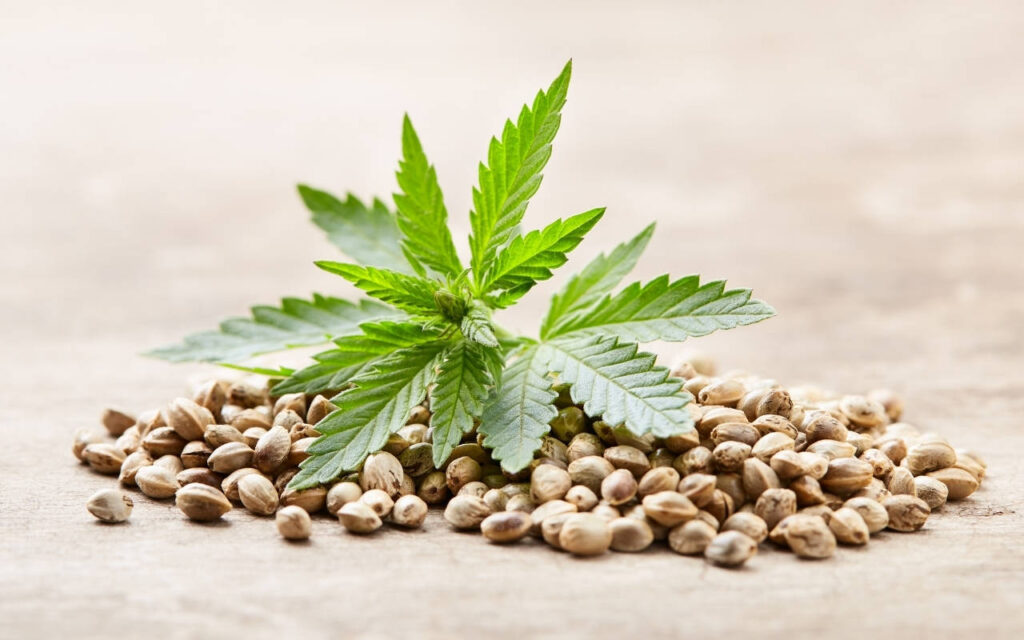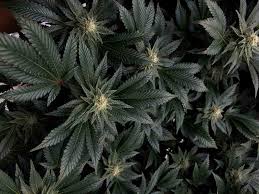Introduction
Godfather OG is often hailed as one of the most potent indica-dominant strains available, earning its nickname as the “Don of All OGs.” Known for its heavy sedative effects and high THC content, it’s a favorite among experienced users seeking relief from chronic pain, stress, or insomnia. But for those with a green thumb, growing Godfather OG at home can be an incredibly rewarding experience—if you know what you’re doing. This blog will walk you through essential tips for cultivating this powerful strain in your own space.
Understanding the Genetics and Growth Traits

Godfather OG is a potent cross between OG Kush and Granddaddy Purple, two legendary strains celebrated for their robust genetics and powerful effects. OG Kush is known for its strong euphoric high and earthy, piney aroma, while Granddaddy Purple brings deep relaxation and its signature purple coloration to the mix. The result is a hybrid that leans heavily indica, offering the best of both parent strains in terms of potency, flavor, and growth behavior.
In terms of cultivation, Godfather OG exhibits many classic indica traits. It grows into bushy, compact plants with a strong central cola and thick lateral branches. These growth characteristics make it particularly well-suited for indoor cultivation or tightly controlled outdoor gardens, where space optimization and canopy management are key. One of the standout visual features of Godfather OG is its dense, trichome-rich buds, which develop a striking purple hue as the plant matures—especially when exposed to cooler nighttime temperatures late in the flowering phase.
Due to its short and stocky stature, Godfather OG is easier to manage than lanky sativa-dominant strains, making it a great choice for beginners. However, the same density that makes it manageable also presents challenges. The thick foliage can trap humidity, which increases the risk of mold and mildew—especially in poorly ventilated spaces. To mitigate this, growers should engage in routine pruning and defoliation, ensuring that airflow reaches the inner parts of the plant and light penetrates the lower bud sites. When maintained properly, Godfather OG can reward growers with high yields of potent, aromatic flower ideal for both medicinal and recreational use.
Indoor vs. Outdoor Growing
Indoor Growing:
Godfather OG thrives in controlled indoor settings. A grow tent or small room fitted with LED grow lights allows you to control temperature, humidity, and lighting schedules. Since the plant is short and dense, indoor growers should use techniques like topping or low-stress training (LST) to improve light penetration and encourage even bud development.
Outdoor Growing:
If you live in a warm, sunny climate, Godfather OG can also flourish outdoors. Choose a location with plenty of direct sunlight and good air circulation. Make sure the soil is well-draining and rich in organic matter. Outdoor plants can yield more, but they’re also more susceptible to pests and weather changes.
Soil and Nutrients
Godfather OG thrives best in nutrient-rich, well-aerated soil that is slightly acidic, with an ideal pH range between 6.0 and 6.5. This range allows for optimal nutrient uptake, ensuring that the plant can absorb all the essential minerals needed for healthy growth. Whether you choose a traditional soil-based grow or opt for a hydroponic system, the key to success lies in delivering the right nutrients at the right stages of the plant’s lifecycle.
During the vegetative stage, Godfather OG requires plenty of nitrogen to support rapid leaf and stem development. Nitrogen is essential for building the plant’s green structure, and a lack of it can result in stunted growth and pale leaves. Once the plant transitions to the flowering stage, the focus should shift toward phosphorus and potassium, which are critical for bud formation, resin production, and overall flower density.
To maximize results, consider using organic compost, worm castings, or cannabis-specific nutrient blends that cater to each phase of growth. These options are not only rich in essential elements but also gentle on the plant, reducing the risk of chemical buildup. However, it’s important to remember that more isn’t always better—overfeeding can lead to nutrient burn, a condition where excess salts damage the roots and leaf tips turn brown or curl. Always follow the manufacturer’s feeding guidelines, and observe your plants regularly for any signs of stress, such as discoloration, drooping, or spotting. With proper care and balanced feeding, Godfather OG can flourish into a potent, high-yielding strain.
Lighting and Temperature Needs
When cultivating Godfather OG indoors, environmental control becomes one of your most powerful tools for maximizing yield and potency. Begin by investing in high-quality full-spectrum LED lights, which closely replicate natural sunlight and are energy-efficient. These lights support robust growth and resin production, which is essential for a strain like Godfather OG. During the vegetative phase, maintain a lighting schedule of 18 hours on and 6 hours off to encourage strong foliage and structural development. Once the plant transitions to the flowering phase, switch to a 12/12 light schedule (12 hours on, 12 hours off) to trigger bud formation.
Temperature control is equally crucial. During daylight hours, keep temperatures within a range of 70–85°F (21–29°C), with a slight drop of 5–10°F at night. As the plant enters the flowering stage, you can lower nighttime temperatures slightly—especially during the final weeks—to help intensify the purple pigmentation Godfather OG is known for. This not only enhances its visual appeal but can also signal maturity in the plant’s cannabinoid and terpene profile.
Humidity levels also need to be monitored closely. In the vegetative stage, maintain relative humidity between 50–60%, which helps with nutrient absorption and overall vigor. However, during flowering, reduce humidity to 40–50% to prevent the development of mold, mildew, or bud rot, especially since Godfather OG tends to produce dense, resinous buds that can trap moisture. Consider using dehumidifiers or fans to improve airflow and maintain optimal conditions throughout your grow space.
Flowering Time and Harvest
Godfather OG typically has a flowering time of 8 to 9 weeks, making it a relatively fast-finishing strain compared to other high-potency cultivars. As the flowering phase progresses, you’ll notice the buds becoming incredibly dense, sticky, and frosted with trichomes—a visual cue of its powerful cannabinoid profile. These trichomes are the small, crystal-like structures that contain the majority of the plant’s THC and aromatic terpenes.
To determine the ideal harvest window, closely examine the trichomes with a magnifying glass or jeweler’s loupe. When most trichomes have turned from clear to a milky white, with a few shifting to amber, the plant has reached peak potency. Clear trichomes indicate the cannabinoids are not fully developed, while too many amber trichomes suggest degradation into CBN, which produces more sedative effects. Harvesting at the right time ensures a balanced high with full therapeutic and recreational benefits.
In the last 7–14 days before harvest, it’s crucial to flush your plants by watering them with pure, pH-balanced water only, without any added nutrients. This process helps remove built-up salts and excess fertilizers from the soil and plant tissue, which can greatly improve the final flavor, aroma, and smoothness of the smoke. Skipping this step may result in harsh hits or a chemical aftertaste, so don’t underestimate the value of a proper flush before harvesting your Godfather OG crop.
Drying and Curing for Maximum Potency
After harvesting your Godfather OG plants, proper drying and curing are essential to preserve potency, flavor, and aroma. Begin by trimming off excess fan leaves and hanging the buds upside down in a dark, well-ventilated room. Keep the temperature between 60–70°F (15–21°C) and the humidity around 50% to prevent mold while allowing the buds to dry slowly and evenly. Avoid direct light, as it can degrade cannabinoids and terpenes. Under ideal conditions, the drying process should take 7–10 days—you’ll know the buds are ready when the smaller stems snap cleanly instead of bending.
Once dry, move on to the curing phase, which is crucial for refining the quality of your final product. Place the dried buds into airtight glass jars, filling them about three-quarters full to allow for some air exchange. Store the jars in a cool, dark place and open them once daily for the first week. This “burping” process releases excess moisture and introduces fresh oxygen, helping to prevent mold and encourage a slow, even cure.
Curing should continue for at least 2–4 weeks, though many growers prefer curing for up to 6–8 weeks for maximum flavor and smoothness. During this time, cannabinoids and terpenes continue to develop, leading to richer aroma, smoother smoke, and enhanced effects. Skipping or rushing this step can result in harsh or grassy-tasting buds—so be patient and let your Godfather OG reach its full potential.
Common Challenges and How to Avoid Them
- Mold and Mildew: Dense buds can trap moisture. Good airflow and proper humidity control are key.
- Nutrient Burn: Start with lower nutrient concentrations and gradually increase as needed.
- Pests: Watch out for spider mites and aphids. Use neem oil or insecticidal soap as preventive measures.
Also Read: Godfather OG for Pain and Stress: Is It the Right Choice for You?
Final Thoughts
Growing Godfather OG at home is not only achievable but incredibly satisfying, especially for those seeking a powerful and therapeutic indica experience. With its manageable plant size, potent effects, and beautiful bud structure, it’s no wonder why growers hold this strain in high regard.
Whether you’re a first-timer or a seasoned cultivator, understanding the specific needs of Godfather OG can help you produce a high-quality yield that delivers both in strength and flavor. Treat the plant with care, pay attention to its signals, and you’ll be rewarded with one of the finest homegrown strains available.

